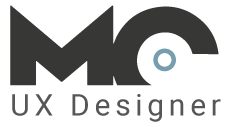
Daylexi

Description
Daylexi marks my initial venture into UX design, completed during my course with CareerFoundry.
By adhering to the Design Thinking Process, I developed an initial low-fidelity prototype of Daylexi, which was evaluated by potential users to identify areas for improvement. This feedback-driven process was crucial in refining the design to enhance usability and learning engagement.
Team members

Used Tools
Design Process

Competitive Analysis
Beginning the project involved analyzing three vocabulary-building apps to understand the current market landscape.

knudge me

cabuu

Duolingo
Key Insight :
The competitive analysis of Knudge.me, Cabuu, and Duolingo provided insights into user preferences and the educational landscape for vocabulary apps. Each app’s unique blend of intuitiveness and entertainment, tailored to its audience, highlighted the importance of balancing engagement with educational value. For DAYLEXI, the strategy involved integrating compelling gameplay with focused learning, ensuring both fun and effective vocabulary enhancement.
User Research
I interviewed 4 people to discover what kind of vocabulary building app they would find useful.
Interview Insights :
After reviewing interview recordings and notes, I categorized the feedback into ‘Doing,’ ‘Thinking,’ and ‘Feeling’ segments.
Example :
Dylan 27 Yo, USA
Lang : English/spanish
Prof : Program Quality
Engineer
Doing
Thinking
I prefer to learn new Spanish vocabulary through listening and conversation
Feeling
I enjoy the process of learning through various methods I feel motivated to continue learning and improving language skills.
Understanding the Problem
I synthesized findings from competitive app analysis and user interview observations to guide my project’s direction. This led to the decision to create a vocabulary-building app for language learning.
Proto Persona :
I crafted a Proto-Persona to embody the anticipated needs, objectives, and actions of the target user base.

Dylan Hand
Demographic :
Age : 27
Location : Florida, US
Occupation : Program Quality Engineer
Education : Bachelor’s degree in Engineering
Behaviors :
- Enjoys reading and listening to podcasts to learn new things
- Prefers hands-on learning and practical applications of knowledge
- Takes a structured approach to learning and enjoys setting goals and tracking progress
- Uses technology and apps to
facilitate learning and productivity
User Stories :
- As social person who loves to communicate, I want to be able to have a conversation with my Spanish colleagues in their native language during work meetings, so that I can better understand their perspectives.
- As a busy professional, I want an app that adapts to my learning speed and level, so that I can make progress without feeling overwhelmed or frustrated.
- As I spend some times front of TV, I want to be able to watch Spanish news programs and documentaries without subtitles, so that I can stay updated on current events in Spanish-speaking countries and improve my listening comprehension.
Information Architecturel
I created Task Analyses and designed User Flows for features I believed Dylan would appreciate in a language learning app.
Wireframing and Prototyping
I began DAYLEXI’s design with initial sketches, discovering the efficiency of sketching for crafting low-fidelity wireframes. These wireframes were then refined and transformed into a clickable prototype using Marvel, an online prototyping tool.
Usability Testing
I carried out usability testing for DAYLEXI, engaging potential users to uncover insights and refine the app’s design for a better user experience.

Conclusion
Launching DAYLEXI as my first UX project was truly illuminating. Engaging with potential users opened up new perspectives that significantly enriched the project. Initially, moving from digital to manual sketching for wireframes felt unconventional, but it proved essential for diving into the iterative design process. In future endeavors, I aim to craft prototypes digitally to streamline user feedback on the prototype’s fidelity. I’m also keen to enhance my skills with design tools like Figma. Presently, my primary challenge is to familiarize myself with the wide range of established digital design practices, including optimal layouts, valuable assets, effective navigation, and thorough accessibility. Understanding these fundamentals is key to innovatively applying and potentially redefining design standards.






